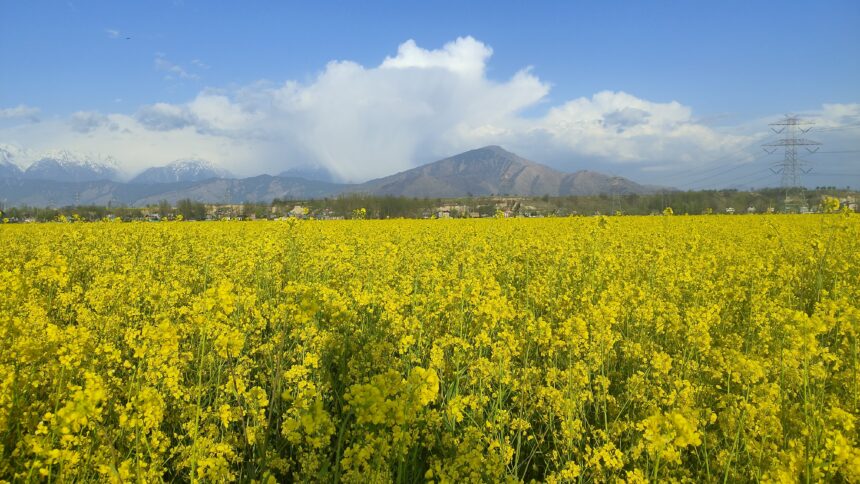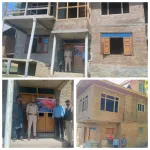Pulwama, April 05: Sher-e -Kashmir University of Agriculture Sciences and Technology Kashmir’s Shalimar Sarsoon 2 ( SS2) variety of mustard is becoming popular among farmers in South Kashmir’s Pulwama district.
The variety is being distributed among farmers across different areas of the district under Front Line Demonstrations (FDL) and Cluster Front Line Demonstrations by SKUAST-K.
Irshad Ahmad, a progressive farmer from Patalbagh village of Pulwama, informed Rising Kashmir that Shalimar Sarsoon 2 was introduced in their village in 2022-23 by SKUAST-K through KVK Malangpora.
He added that free of cost seeds of the SS2 mustard variety were provided to farmers and approximately 200 kannals of land were brought under the new variety.
He said that the trial demonstrations proved successful yielding around 75 kilograms of oil seed per kannal against 50 to 60 kilogram yield obtained from traditional varieties.
He added that one farmer in their village obtained 110 Kilogram yield per Kannal last year which encouraged others to follow the suit.
The progressive farmer said that out of 3000 kanals of land under mustard cultivation, around 2000 kanals grow the SS2 variety.
Dr Javeed Mugloo, Chief Scientist and Head KVK Malangpora, said that around 150 hectares of land were brought under SS2 through CFLD and FLD in the past year.
He said that the farmers form a chain and multiply the seed by distributing it among themselves which helps in suturing a particular area.
“This is a high yielding variety released by SKUAST-K and on average it yields 12 to 15 quintals of oil seed per hectare of land,” he said, adding that cultivation of this variety will help in becoming self-sufficient in oil production.
“We will be able to produce for our consumption and for export to other places,” he said, adding that high production will also help in containing spiralling prices of cooking oil.
He said that a total land of 17100 hectares is under cultivation of mustard, mostly SS2, in Pulwama.
He added that the production is around 25 lakh and 50 thousand metric tonnes.








